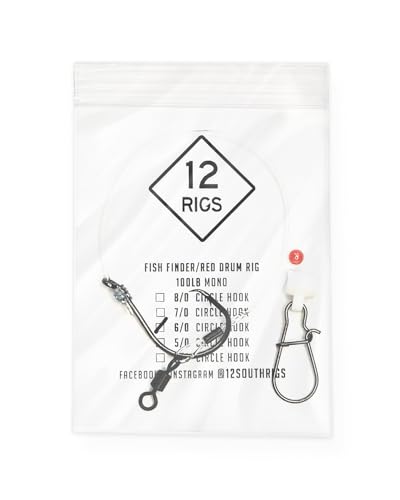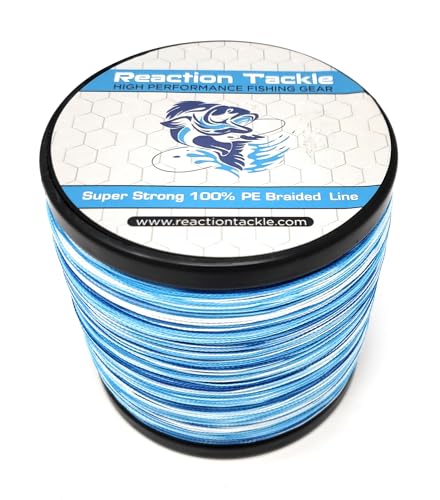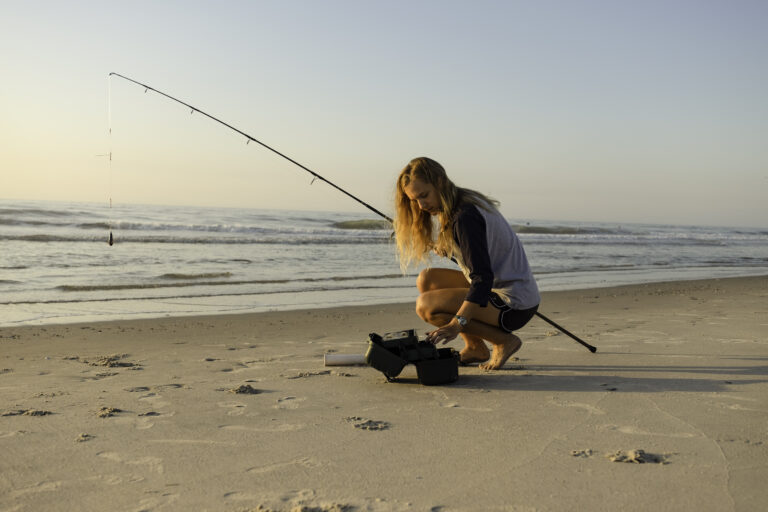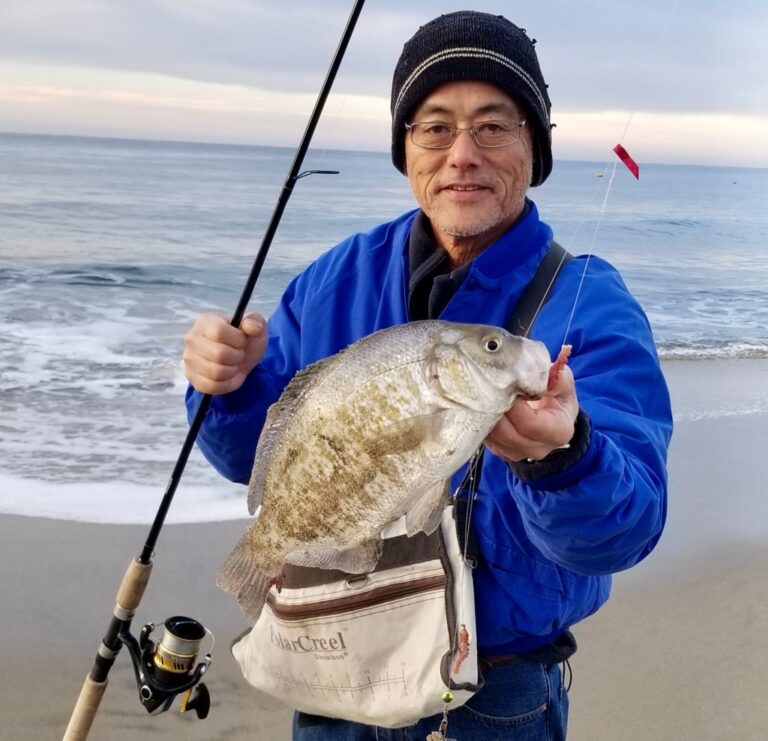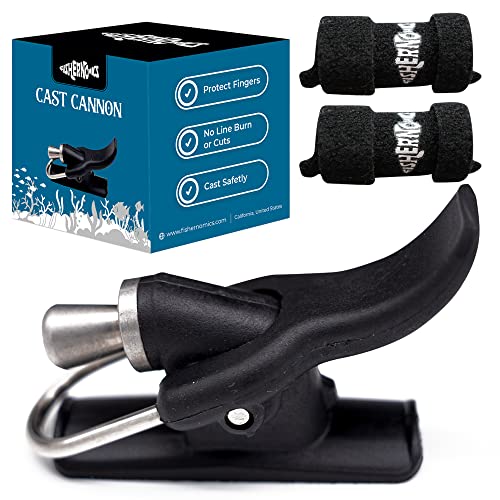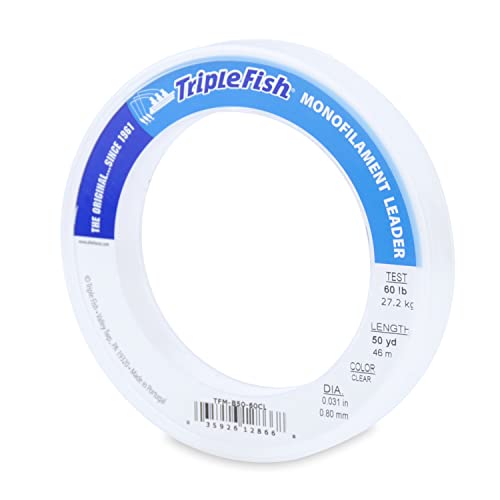Surf fishing is best done on sandy beaches with a gradual slope into the water, such as those found along the coastlines of florida and california. These areas provide ideal conditions for casting into deeper waters where fish are more likely to be present.
Fishing in areas with heavy wave action can also be beneficial as it stirs up the water and attracts fish looking for food. Additionally, it is important to consider factors such as the time of day, tides, and weather conditions when choosing a location for surf fishing.
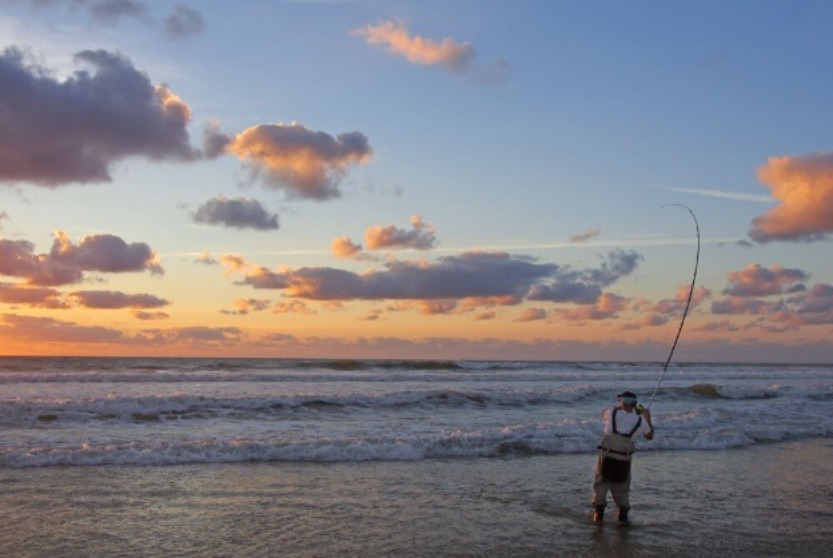
Credit: www.mcclurerealtyvacations.com
Understanding The Surf Zone
The surf zone is an exhilarating place for avid surf fishermen. It’s where the ocean meets the shore, and it’s teeming with opportunities to catch some impressive fish. But understanding the surf zone is crucial to increasing your chances of a successful fishing trip.
In this section, we will explore the definition of the surf zone in fishing and the factors to consider when understanding it. So let’s dive in!
Definition Of Surf Zone In Fishing
The surf zone refers to the area where waves break as they approach the shoreline. It is the dynamic zone where various factors come together, creating a unique environment for surf fishing. Understanding the characteristics of the surf zone is vital for targeting the right areas and maximizing your fishing opportunities.
Here are some key points to keep in mind:
- Wave action: The surf zone is characterized by powerful waves that crash onto the beach. These waves create turbulence and movement, affecting the behavior and location of fish.
- Water depth: The depth of the surf zone varies depending on the beach and tides. It typically ranges from knee-deep to waist-deep, providing a habitat for a wide variety of fish species.
- Sandbars and troughs: Sandbars and troughs are common features in the surf zone. Sandbars are underwater ridges formed by deposits of sand, while troughs are depressions or channels between the sandbars. These formations influence the movement of water and fish.
Understanding the dynamics of the surf zone will help you determine the best spots to cast your line and increase your chances of a successful catch.
Factors To Consider When Understanding The Surf Zone
When it comes to understanding the surf zone, several factors play a significant role in determining where to cast your line. Consider the following:
- Currents and tidal movements: Pay attention to the currents and tidal movements in the surf zone. These factors influence the distribution and movement of fish, and knowing when and where they occur can help you target the right areas.
- Structure and features: Look for distinct features in the surf zone, such as rock formations, jetties, or submerged vegetation. These structures provide shelter and feeding opportunities for fish, making them ideal spots to cast your line.
- Water clarity and temperature: Water clarity and temperature affect the behavior and feeding patterns of fish. In clear waters, fish may be more cautious, requiring a stealthy approach. Additionally, fish are often more active in warmer water temperatures.
- Baitfish presence: The surf zone is a vibrant ecosystem, attracting baitfish that, in turn, lure larger predatory fish. Keep an eye out for signs of baitfish activity such as birds diving or surface disturbances, as they can indicate potential feeding frenzies.
By considering these factors and understanding the surf zone, you’ll be better equipped to select the optimal casting locations and make the most of your surf fishing adventures.
Remember, the key to successful surf fishing lies in understanding the surf zone’s dynamics and adapting your approach accordingly. So get out there, explore different areas, and enjoy the thrill of surf fishing in this dynamic and beautiful environment. Happy casting!
Reading The Beach For Optimal Casting Spots
Surf fishing is not just about having the right gear and a solid cast. It’s also about understanding the beach and its dynamics. To increase your chances of catching fish, you need to read the beach and identify the best casting spots.
In this section, we will discuss how to identify potential fish-holding features on the beach and strategies for analyzing water movement and current.
Identifying Potential Fish-Holding Features On The Beach
When it comes to surf fishing, the beach is not just a stretch of sand. It is a dynamic environment with various features that attract fish. By understanding and locating these features, you can significantly improve your chances of catching fish.
Here are some potential fish-holding features to look out for:
- Sandbars: These underwater ridges of sand are like highways for fish. They provide a structure where fish can hide, feed, and take advantage of current breaks.
- Inlets and outflows: Where rivers or streams meet the ocean, they create a change in water temperature, salinity, and food source. This makes these areas hotspots for fish activity.
- Rock formations: Rocks often provide shelter for smaller baitfish, which in turn attract larger predatory fish. Look for rocky clusters or jetties along the beach.
- Tidal pools: These shallow depressions form when the tide goes out, trapping small fish and crustaceans. They can be excellent spots to find fish feeding.
- Depressions and channels: Sections of the beach with deeper water, depressions, or troughs can concentrate fish, as they offer a change in depth and potential feeding grounds.
Strategies For Analyzing Water Movement And Current
Understanding water movement and current is crucial when determining where to cast your line. Here are some strategies to help you analyze the water movement and find the best casting spots:
- Observe the waves: Look for patterns in the waves. Breaking waves indicate shallow water, while calm areas between waves may suggest deeper water or sandbars.
- Ripple effect: Pay attention to the ripples on the water’s surface. Ripples moving parallel to the shore may indicate a current, while ripples moving towards the shore may indicate an outgoing tide.
- Drifting debris: Notice any seaweed, driftwood, or floating debris. These can help you identify the direction of the current and potential feeding zones.
- Bird activity: Birds are excellent indicators of fish activity. If you spot a group of diving birds in one area, it’s a good sign that there are baitfish below the surface.
- Use a fishing app: There are many fishing apps available that provide real-time data on tides, currents, and weather conditions. Utilize these tools to plan your fishing trips and identify prime casting spots.
By observing and understanding these factors, you can unlock the secrets of the beach and increase your chances of hooking that prized catch. So, next time you head out for a surf fishing adventure, take the time to read the beach and make strategic decisions based on the potential fish-holding features and water movement.
Happy fishing!
Choosing The Right Casting Techniques
Surf fishing can be an exhilarating experience, allowing you to cast your line into the vast expanse of the ocean while enjoying the beautiful coastal scenery. However, mastering the art of casting in the surf zone is crucial for a successful fishing trip.
In this section, we will discuss the importance of proper casting techniques in surf fishing and provide expert tips for long-distance casting in the surf zone.
Importance Of Proper Casting Techniques In Surf Fishing
Proper casting techniques are essential in surf fishing as they can greatly impact your success in catching fish. Here are the key points to keep in mind:
- Casting accuracy: A precise and accurate cast is crucial to ensure that your bait or lure reaches the desired spot where fish are present. By honing your casting technique, you increase your chances of enticing fish to bite.
- Avoiding snags: Surf fishing often involves casting into turbulent waters, where various obstacles such as rocks, seaweed, or sandbars are prevalent. With proper casting techniques, you can minimize the risk of getting your line tangled or caught on these obstructions.
- Reaching the right depth: Different species of fish prefer different depths in the water. By mastering your casting technique, you can effectively reach the desired depth and target the specific types of fish you are after.
- Covering a larger area: With the right casting technique, you can maximize your coverage of the surf zone. This allows you to explore different areas where fish might be present, increasing your chances of a successful catch.
Expert Tips For Long-Distance Casting In The Surf Zone
Long-distance casting can be beneficial when fishing in the surf, as it allows you to reach fish that are further out in the water. Here are some expert tips to help you cast longer distances:
- Utilize longer rods: Longer rods provide more leverage, allowing you to generate greater casting distance. Look for rods specifically designed for surf fishing, typically ranging from 10 to 15 feet in length.
- Choose the right reel: Opt for a spinning reel with a large spool capacity to accommodate the heavy line required for surf fishing. A reel designed for long-distance casting can help you achieve greater distances with each cast.
- Perfect your casting technique: Proper casting technique plays a significant role in achieving long-distance casts. Focus on your body positioning, weight transfer, and timing to generate optimal power and distance.
- Consider wind direction: Wind can greatly affect your casting distance. Cast with the wind at your back to take advantage of its assistance in pushing your line further into the surf zone.
- Practice makes perfect: Regular practice is key to improving your long-distance casting skills. Head to an open area, away from obstacles, and continuously practice your casting technique to build up your skills and achieve greater distances.
By understanding the importance of proper casting techniques and following these expert tips for long-distance casting in the surf zone, you can enhance your surf fishing experience and increase your chances of reeling in that elusive catch. So, get out there, practice your casting, and enjoy the thrill of surf fishing!
Best Locations For Casting In Different Surf Conditions
Surf fishing is not only a thrilling outdoor activity but also a great way to catch some delicious fish. However, knowing where to cast your line in different surf conditions is crucial to ensure success. Whether you’re facing calm surf or choppy and turbulent waters, understanding the best locations to cast will significantly improve your chances of reeling in a big catch.
In this section, we will explore the tips and strategies for casting in different surf conditions, helping you make the most of your surf fishing adventures.
Tips For Casting In Calm Surf Conditions
When the surf is calm and gentle, taking advantage of the following tips will help optimize your fishing experience:
- Cast further out: In calm conditions, fish tend to gather farther from shore. Make sure to cast your line beyond the breakers to reach the feeding grounds of the fish.
- Target deeper areas: Look for troughs or drop-offs near the shore, as fish often prefer these deeper areas when the surf is calm. Casting near these spots increases your chances of hooking a fish.
- Use lighter tackle: Since the waves are not strong, utilizing lighter tackle and smaller baits can yield better results. Opt for a light spinning rod, a thin line, and smaller hooks to entice fish in calm waters.
Strategies For Casting In Choppy Or Turbulent Surf Conditions
When the surf becomes choppy and turbulent, adapting your casting strategies will help you overcome the challenging conditions and keep your lines productive. Consider the following strategies:
- Cast parallel to the shore: In choppy conditions, casting parallel to the shore can be more effective than casting straight out. This method allows your bait to stay in the strike zone longer, increasing your chances of enticing a fish.
- Utilize heavier sinkers: To counteract the strong currents and turbulent surf, opt for heavier sinkers to keep your bait in the desired location. It helps prevent your rig from moving too quickly, maintaining visibility for potential catches.
- Choose larger lures: In rougher waters, larger lures or bait can attract fish from a greater distance. The increased visibility and action of larger lures make them more enticing in choppy surf.
Remember, the key to successful surf fishing lies in understanding the unique challenges each condition presents and adjusting your casting techniques accordingly. Whether the surf is calm or turbulent, utilizing the appropriate tips and strategies will greatly enhance your chances of landing some impressive catches.
So, get out there, experiment with different techniques, and experience the thrill of surf fishing in various conditions.
Targeting Specific Fish Species Through Casting
Surf fishing is an exhilarating way to engage with the ocean and have a chance at catching some incredible fish. Depending on your target species, different casting techniques can greatly improve your chances of success. In this section, we will explore how to identify common fish species in the surf zone and tailor your casting techniques accordingly.
Identifying Fish Species Commonly Found In The Surf Zone
- Striped bass: Striped bass are a popular target for surf anglers. They are known for their distinctive lateral stripes and can reach impressive sizes.
- Bluefish: Bluefish are aggressive predators that can put up a strong fight. They have a blue-greenish color and sharp teeth.
- Red drum: Red drum, also known as redfish, are prized for their delicious taste and strong fight. They have a distinctive black spot near their tail.
- Flounder: Flounder are flatfish that lurk at the bottom of the surf zone. They have both eyes on one side of their body and can blend seamlessly with the sand.
- Pompano: Pompano are prized for their delicious flesh and are often found in sandy areas. They have a silver body with yellowish hues.
Tailoring Casting Techniques To Target Specific Fish Species
- Striped bass:
- Cast beyond the breaking waves to reach deeper waters where striped bass often feed.
- Use lures such as spoons, jigs, or soft plastics that mimic the baitfish they prey upon.
- Bluefish:
- Due to their aggressive nature, bluefish can be caught using a variety of casting techniques.
- Cast both near the shore and out into deeper waters to maximize your chances.
- Consider using topwater lures to elicit explosive strikes from these voracious predators.
- Red drum:
- Look for areas near sandbars or jetties where red drum tend to congregate.
- Casting cut bait, such as chunks of fish or shrimp, can be effective in attracting these bottom-dwelling fish.
- Use a slow retrieve to mimic the movement of their preferred prey.
- Flounder:
- Focus your casts along the sandy bottoms where flounder hide.
- Use live bait like minnows or shrimp to entice flounder to bite.
- Employ a slow and steady retrieve to keep your bait near the bottom where flounder feed.
- Pompano:
- Cast your line in areas with a sandy bottom, near sandbars or troughs where pompano commonly forage.
- Employ a short, quick retrieve to mimic the movement of sand fleas, their preferred prey.
- Sand flea imitation lures or small jigs tipped with shrimp can be effective in attracting pompano.
By identifying the fish species commonly found in the surf zone and adjusting your casting techniques accordingly, you’ll greatly increase your chances of landing your desired target. Remember to observe local fishing regulations and always practice catch and release when appropriate.
Get out there and enjoy the thrill of surf fishing!
Maximizing Success With Bait And Lure Presentation
Surf fishing is an exhilarating sport that requires knowledge, skill, and the right tools to be successful. While choosing the right location to cast your line is important, maximizing your success with bait and lure presentation is equally crucial. In this section, we will explore the key aspects of selecting the appropriate bait and lures for surf fishing and the techniques to present them effectively.
Selecting The Appropriate Bait And Lures For Surf Fishing
When it comes to surf fishing, choosing the right bait and lures can greatly impact your success in catching fish. Here are some key points to consider:
- Research the local fish species: Different fish species have varying feeding habits and preferences. Before heading out to the surf, research the common species in the area you plan to fish. This will help you determine the appropriate bait and lures to use.
- Live bait: Using live bait is often an effective approach in surf fishing. It mimics the natural movement and scent of prey, attracting predatory fish. Additionally, live bait offers a realistic presentation that can entice hesitant fish.
- Cut bait: Cut bait, such as squid or fish fillets, can also be successful in surf fishing. It releases scent into the water, attracting fish from a distance. Cut bait is particularly effective in murky or rough water conditions.
- Artificial lures: Artificial lures come in various shapes, sizes, and colors. They can imitate the appearance and movement of different prey, enticing fish to bite. Experiment with different types of lures to see what works best for the species you are targeting.
Techniques For Presenting Bait And Lures Effectively
Selecting the right bait and lures is just the beginning. Presenting them effectively is equally important. Here are some techniques to consider:
- Casting distance: Casting your bait or lure beyond the breaking waves can increase your chances of attracting fish. Look for deeper pockets or areas with structure, as fish often congregate in these locations.
- Retrieve speed: Experiment with different retrieve speeds when using lures. Some fish may be more attracted to a fast, erratic retrieve, while others prefer a slow and steady presentation. Pay attention to any signs of interest from the fish and adjust your retrieve accordingly.
- Vary your presentation: Fish can be finicky, so it’s important to vary your presentation to keep them interested. This can include changing the depth at which you fish, the direction of your retrieve, or the size and color of your bait or lure.
- Stay observant: Observe the behavior of the fish and any underwater movements. This can give you insights into their feeding patterns and help you adjust your presentation accordingly. Pay attention to any signs of baitfish or predatory activity in the area.
By taking the time to research the local fish species, selecting the appropriate bait and lures, and using effective presentation techniques, you can significantly increase your chances of success in surf fishing. Remember to stay adaptable and observant, as fishing conditions can change throughout the day.
So get out there, cast your line, and enjoy the thrill of surf fishing!
Adjusting Casting Techniques For Tides And Currents
Surf fishing is an exciting and rewarding sport that requires some specific strategies to be successful. One important aspect of surf fishing that often gets overlooked is the impact of tides and currents on your casting techniques. Understanding how tides and currents work can make a significant difference in your fishing experience.
So, let’s dive in and explore how to adjust your casting techniques for different tide and current conditions.
Understanding The Impact Of Tides And Currents On Surf Fishing
- Tides play a crucial role in determining the movement of fish and their prey. It’s essential to understand how tides affect the concentration of fish in certain areas.
- Incoming tides tend to bring baitfish and other forage closer to the shore, which attracts larger predatory fish. Casting during this time could lead to more bites and increased chances of catching a fish.
- On the other hand, outgoing tides can create strong currents, making it difficult for fish to swim against them. During this time, casting at the edge of the current or in areas where fish seek shelter can be more effective.
- Be aware that different species of fish may prefer different tide conditions. Some fish, like striped bass, might be more active during a particular tide phase. Research local fishing reports or consult with experienced anglers to determine the optimal tide for your target species.
Adapting Casting Techniques To Changing Tide And Current Conditions
- Casting with the tide can help your bait or lure move naturally with the current, making it more enticing to fish. Experiment with casting at different angles and distances to find the sweet spot.
- If you’re fishing during a strong current, it’s essential to cast upcurrent to allow your bait or lure to reach the desired area. This technique helps ensure that your bait stays in the strike zone longer, increasing your chances of attracting a bite.
- Consider using heavier sinkers or weights to counteract the strong currents. This will help keep your bait stable and prevent it from drifting too far from the targeted area.
- Pay attention to any obstructions or structures that could impact the movement of the tide or current. These include jetties, sandbars, or rocks. These areas can create eddies or pockets where fish congregate, making them prime spots for casting.
- Lastly, keep in mind that tides and currents are not constant throughout the day. They change with the moon phases and other environmental factors. Continuously monitor and adjust your casting techniques as the tide and current conditions evolve.
By understanding the impact of tides and currents on surf fishing and adapting your casting techniques accordingly, you can increase your chances of landing a great catch. Remember, each tide and current condition offers unique opportunities, so don’t be afraid to experiment and try new techniques.
Happy fishing!
Exploring Additional Factors For Successful Casting
Surf fishing is a popular activity among anglers who crave the thrill of casting their lines from the shore. While it may seem simple, there are several factors to consider to ensure a successful cast in the surf. In this section, we will explore the importance of timing and tide tables, as well as the significance of weather patterns and water clarity when it comes to casting in the surf.
Importance Of Timing And Tide Tables In Surf Fishing
Timing is crucial when it comes to surf fishing. The movements of fish and their prey are influenced by the tides, and being aware of the tide schedules can significantly improve your chances of a successful catch. Here are the key points to keep in mind:
- Consult tide tables: Check local tide tables to determine the high and low tide times for the day. This information will help you plan your fishing trip accordingly.
- Fish during the change in tides: The best time to cast your line is during the rising or falling tide when fish are more active and likely to be feeding.
- Avoid fishing during slack tides: Slack tides, when there is little to no movement in the water, tend to result in fewer bites. It’s best to fish when the water is moving.
- Adjust your fishing spot according to the tide: As the tide changes, fish may move closer to shore or migrate to deeper waters. Be prepared to adjust your location accordingly to maximize your chances of catching a fish.
Considering Weather Patterns And Water Clarity When Casting
In addition to timing and tides, paying attention to weather patterns and water clarity is essential for a successful cast. Here are some key factors to consider:
- Check the wind direction: Strong onshore winds can create rough surf, making it difficult to cast your line and causing your bait to drift closer to shore. Consider fishing on calmer days when the wind is blowing offshore or with a light breeze.
- Look for temperature changes: Fish are sensitive to temperature changes, and certain species may move to different depths depending on the water temperature. Use a thermometer to monitor water temperature and adjust your fishing technique accordingly.
- Assess water clarity: Clear water allows fish to spot your bait more easily, increasing your chances of getting a bite. If the water is murky or muddy, consider using bait or lures that create more vibration to attract fish.
- Pay attention to cloud cover: Cloudy days can provide better fishing opportunities as fish tend to be less wary and more active when there is less sunlight. Take advantage of these conditions and cast your line during overcast days.
Successful casting in surf fishing requires careful consideration of several factors. By understanding the importance of timing and tide tables, as well as considering weather patterns and water clarity, you can increase your chances of landing that prize catch. So pack your gear, study the tide tables, and keep an eye on the weather forecast – the surf is waiting for you!
Conclusion
Choosing the right location for surf fishing is crucial for a successful outing. By considering factors such as water depth and current, sandbars and troughs, and nearby structures, anglers can significantly increase their chances of catching fish. The atlantic coast, with its abundance of beaches and diverse marine life, offers numerous ideal spots for surf fishing.
From the outer banks in north carolina to the beaches of new jersey, there are endless opportunities for anglers to cast their lines and reel in a big catch. The gulf coast is another excellent option, with its warm waters and variety of species.
Popular locations like gulf shores in alabama and south padre island in texas attract anglers from all over the country. By doing some research, talking to local fishermen, and experimenting with different areas, surf anglers can find the perfect hotspots to cast their lines and enjoy a thrilling day of surf fishing.
So grab your fishing gear, explore the coast, and get ready for an exciting adventure on the water!

